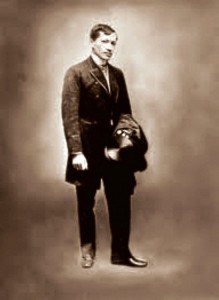Imagining the Filipino
NEW YORK – This semester for the first time I taught a course on José Rizal, titling my seminar, “José Rizal and His Novels: Imagining the Filipino.” Only four students signed up. I found out, too late, from a former student, that New York University students consider three-day weekends sacrosanct, beginning of course on a Friday. Had I offered the course on any other weekday, I was assured that the registration would have been greater.
On the other hand, the small class size meant a greater level of interactivity, and more intense discussions of Noli Me Tangere and El Filibusterismo. As supplementary material we read essays by Nick Joaquin taken from his provocative A Question of Heroes, and by the preeminent and eminently readable Ambeth Ocampo (from his The Meaning of History); Reynaldo Ileto’s “In a Time of Revollution,” continuing his focus on history from below; and Benedict Anderson’s Under Three Flags, that pays particular attention to Rizal’s second novel. We concluded with reading Mi Ultimo Adios, both in the original Spanish and an English translation by the San Francisco-based Filipino-American writer and Hispanicist, Edwin Lozada.
We screened Malou Diaz-Abaya’s 1998 biopic Rizal and Eddie Romero’s 1976 Ganito Kami Noon, Paano Kayo Ngayon (As We Were). The biopic was to give the students a clear narrative, if conventionally presented, of the iconic national hero, giving their study of his writings a historical context—supplemented by readings from the general history of the Philippines that I authored. Diaz-Abaya’s film is well-crafted, its production values first-rate, and with a convincing Cesar Montano in the lead—and the director Peque Gallaga utterly terrifying turn as the chief prelate out for Rizal’s blood.
The film is a bit stolid and treads the well-worn path of representing Rizal’s life, though at times scenes from the Fili are rendered onscreen, with Joel Torre in the role of Simoun/Ibarra, the man out for revenge against the colonial state that has caused so much misery for his family and his beloved Maria Clara. The night before his execution, Montano as Rizal is shown in his Fort Santiago cell, bedeviled by Simoun, his own creation, demanding that the ending of the Fili be rewritten so as to render the putative rebellion successful rather than doomed to failure—the way I would think the many, many victims of abuse by the Philippine state, whether directly at the hands of the military or of the larcenous folks who masquerade as legislators and government higher-ups, fantasize about finally getting revenge. One reason, other than their many literary virtues, that the novels remain relevant to our times is that there is a whole army of Simouns out there, of Sisas and Basilios, who despair of ever seeing a society that pays more than lip service to respect for human rights.
With Romero’s film, I wanted the students to get a sense of how the idea of being a Filipino evolved at the end of the nineteenth century, when the revolution against Spain dovetailed with the Spanish-American War and shortly metamorphosed into the 1899 Philippine-American War. This growing awareness of nation manifests itself in the lives of some of the characters, but mainly through the picaresque adventures of Kulas (a young probinsyano, played by Christopher de Leon) who winds up somehow as an upwardly mobile gentleman, though not quite an Ilustrado, in colonial Manila. At the film’s conclusion, Kulas leaves all the riches behind, but already metropolitan in outlook and now aware of himself as a Filipino—heretofore a designation limited to creoles—and not just an Indio.
I had also wanted to screen for my class Mike de Leon’s Bayaning Third World (Third World Hero) but the DVD I had alas lacked English subtitles—and only one student spoke enough Tagalog to understand the dialogue. Compared to Rizal, de Leon’s film is a low-budget affair, but it is a far more imaginative take on not just the life of our Lolo Pepe but on the problematic notion of being a hero. Two friends planning the film constantly debate facets of his life; they imagine interviews with Josephine Bracken, with Teodora Alonso; and they tackle headlong the topic of Rizal’s retraction, that Malou Diaz-Abaya shies away from. Did he or didn’t he? It’s a cinematic and often witty interrogation of our dearly held notions of Rizal. De Leon doesn’t take this hero for granted, following consciously or not Ocampo’s lead in making sure that we see the man rather than the symbol, to view Rizal, as Ocampo puts it, “without the overcoat.”
We did watch, thanks to YouTube, Gerardo de Leon’s 1961 filmic version of the Noli. (Interestingly, there is a wealth of versions of the novel on YouTube, from musicals to student productions to snippets from the Diaz film.) I chose two 15-minute segments, from the faux conspiracy that entraps Ibarra to his subsequent escape, vowing to take revenge—clearly, a nod to the Fili, which I’m positive the late director was planning to film as well.
Teaching the course made me realize that, in spite or perhaps because of, the volumes already written on Rizal, how much there is yet to see in his life and writings. But before anything else, one needs to read, and reread, these novels.
Copyright Luis H. Francia















